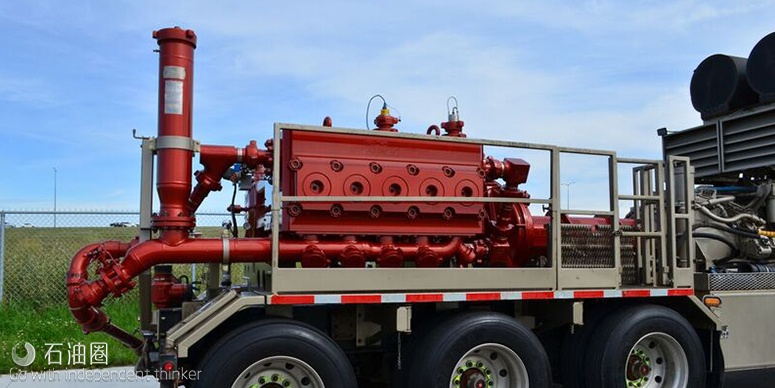Some pumping-service companies choose to extend the life of their aging pump fleet by repairing them as they fail, to “keep them alive” in the belief this is a better business decision than replacement.
In the case of high-pressure oilfield pumps, any short-term savings realized by such a decision are more than offset by long-term cost increases and lost business opportunities.
Objective evaluation of the most important factors impacting the decision to repair or replace pumps make the correct choice clear. In most cases, it makes better business sense to replace rather than repair.
Age of your existing pump fleet
This factor is unavoidable: the performance and reliability of all pumps, regardless of source, diminish over time. Structural cracks, leaks, and metal fatigue are among the failure modes virtually certain to occur at some point.
Real costs of repair
Repair has a significant cost in downtime. And downtime is lost revenue that can never be regained. If you consider pump reliability and performance as a decline curve, repairs might flatten the curve slightly. But repairs won’t eliminate an extremely important factor: risk of catastrophic failure.
Risk
Avoiding the assumption of unnecessary risk is perhaps the biggest reason to operate an up-to-date pump fleet. Business risk from downtime is serious and costly, of course, but even more serious—and with potentially far greater costs—are HSE risks in the case of catastrophic pump failure.
Limitations of refurbishing
Refurbishing newer pumps once or twice can be a sound alternative to replacement. But inevitably, reconditioning of an aging fleet becomes a poor business decision. Even a successfully refurbished pump will have substantial limitations; it will be incapable of performing at the level of pumps with the newest technology, and it will unavoidably require more frequent maintenance.
Excessive downtime
As pumps travel along their “decline curve,” consumable parts such as valves and seats, plungers, and packing begin to wear more quickly and thus require more frequent replacement or maintenance. This means more downtime. While routine maintenance is expected and budgeted, aging pumps begin to require excessive maintenance, and unexpected repairs force unscheduled downtime.
Higher performance, greater flexibility
New pumps perform more efficiently. For example, Gardner Denver’s newest pump designs have an 11-in. stroke. This design improvement delivers greater flows at lower RPM. Running at lower RPM means reduced wear on consumable parts, which reduces maintenance costs and downtime. Newer pumps are also designed for today’s severe duty applications. This gives the service company more fleet flexibility and deployment options.
Advantages of standardization
Assembling a fleet of pumps from a variety of sources may have some short-term advantages. But these are usually more than offset by the introduction of unnecessary cost and operational complexity. Fleet standardization allows companies to order and stock frequently used consumable parts and systematize their maintenance procedures. The result is lower cost and higher efficiency.
Case study: Thunder Pump
A major pumping service’s field experience with the Gardner Denver quintuplex Thunder Pump illustrates the advantages only the latest pump technology can deliver.
In just over four months, the company’s Thunder Pump has worked for eight clients, on ten wells, with a total of 4,534 cycles per hour, without downtime. According to the company, “By using [this] powerhouse pump, clients receive unparalleled performance at extraordinary operating efficiencies resulting in significant economic savings for large scale operations in the Duvernay and Montney.”
Overview
Project Scope: Pumping pressures above 55 MPa and multi-well pads
Location: Duvernay and Montney Rate: 8-20 cubes/min.
Total Pumping Hours: 368 hours to date (500 hours on the power end before implementing in the field)
Total Cycles: 1.67 million cycles (2 million cycles on the power end before implementing in the field)
Results
Increased reliability
- Thunder Pump has been running for 368 hours, representing 1.67 million cycles without any downtime.
- 11-in. stroke length: Requires less RPM to get the same volume as the standard 8-in. stroke.
- Stainless steel construction for superior corrosion resistance.
Reduced planned maintenance and NPT
Traditional pumps must be taken out of service for maintenance every 3,000 hours on a standard 2,500 hp configuration. Thunder Pump’s planned maintenance is synced to the standard maintenance interval of all major components on a frac trailer, resulting in less downtime.
Decreased environmental impact
- A standard 12-pump job requires eight Thunder Pumps, resulting in a smaller environmental footprint.
- Carbon footprint is reduced by two-thirds because fewer pumps are needed.
- Carbon emissions are decreased by using dynamic gas blending.
Increased safety
- Fewer pumps are needed to do the same job, meaning fewer professionals to staff the equipment onsite.
- With 30 percent less maintenance, fewer professionals are required to maintain the equipment.
- There is a decreased risk of motor vehicle incidents because there is less equipment moving to and from site.

 石油圈
石油圈
